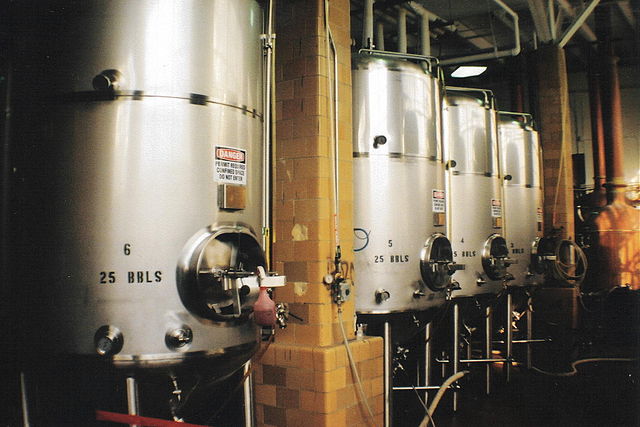Let’s look at another example of writing out a standard minimization problem. This is a question about minimizing the costs at a brewery that produces regular and light beer. It goes something like this…
A brewery produces two types of beer. One beer is a regular beer with a typical number of calories. The other beer is a light beer containing a lower number of calories per serving. Steady customers of the brewery buy 10 units of regular beer and 15 units of light beer per month. The brewery wishes to produce extra beer beyond that which steady customers demand. The cost per unit of regular beer is 32,000 dollars and the cost per unit of light beer is 50,000 dollars. Every unit of regular beer brings in 120,000 dollars in revenue and every unit of light beer brings in 300,000 dollars in revenue. The brewery wants at least 9,000,000 dollars in revenue. At least 20 additional units of beer can be sold.
How much beer of each type must be sold to minimize production costs?
To begin a problem like this, define the independent variables:
R: units of regular beer
L: units of light beer
Once the variables are established, let’s write out the objective function that must be minimized. We are minimizing production costs and the pertinent info in the problem is
The cost per unit of regular beer is 32,000 dollars and the cost per unit of light beer is 50,000 dollars.
It is easiest to work in thousands of dollars and to write the objective function as
C = 32R + 50L
There are two constraints on production. First of all, the brewery needs at least 9,000,000 dollars (9000 thousand dollars). The corresponding revenue data in the problem is
Every unit of regular beer brings in 120,000 dollars in revenue and every unit of light beer brings in 300,000 dollars in revenue.
The revenue (in thousands of dollars from R units of regular beer is 120R and from L units of light beer is 300L. This means
120R + 300L ≥ 9000
The second constraint has to do with the fact that “at least 20 additional units of beer can be sold.” If steady customers require 10 units of regular beer and the brewery produces R units total, the additional amount produced is R – 10. Similarly, the additional amount of light beer produced is L – 15. So the constraint for additional units is
R – 10 + L – 15 ≥ 20
Isolating R and L on the left side gives
R + L ≥ 45
Let’s put all of this together in a standard minimization problem:
Minimize C = 32R + 50L subject to
120R + 300L ≥ 9000
R + L ≥ 45
R ≥ 0, L ≥ 0
The last constraints are need since the amounts of beer produced can’t be negative.
With this standard minimization problem in hand, we can now apply the simplex method to find the solution. Using this technique, we find that the minimum cost is 1800 thousand dollars (1,800,000 dollars) and occurs when 25 units of regular beer and 20 units of light beer are produced.

